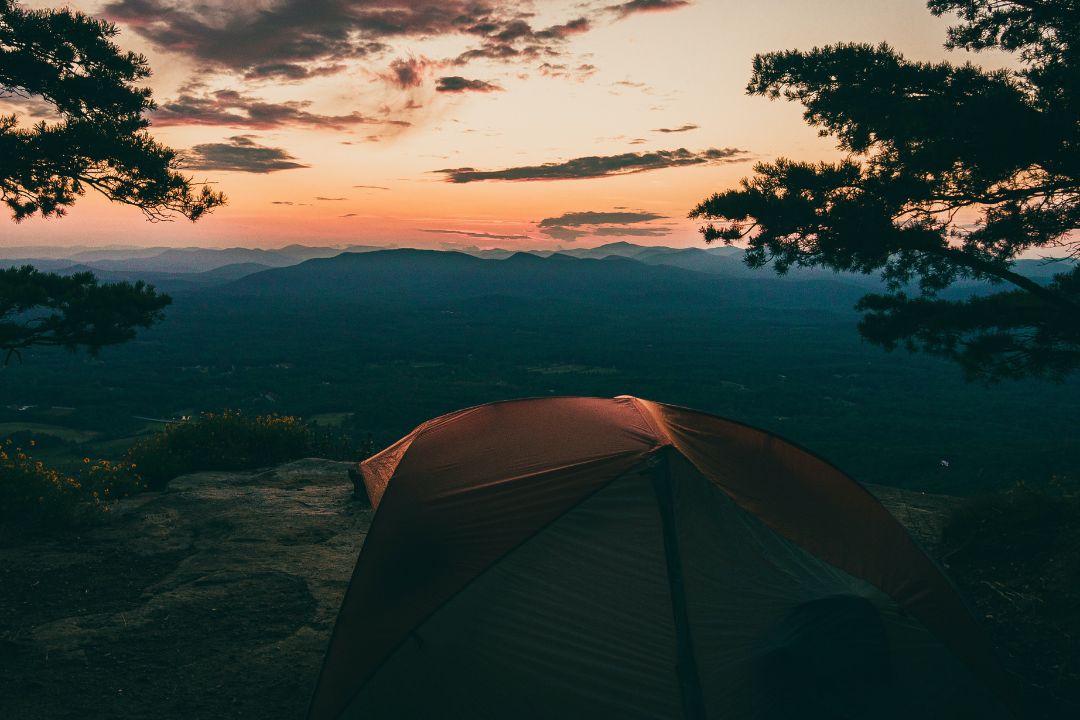Hiking and camping: what to take on your backpacking trip
Outdoor Activities | March 28, 2024
Win a trip to Crete by becoming an Explore + member
SAIL
January 20, 2023

The love of wide open spaces, the thirst for freedom and the desire to discover new, lesser-explored places are just some of the reasons that can make you want to give backcountry camping a try.
It may seem like the easiest thing to do after a few successful excursions in natural parks. However, it cannot be entirely improvised, especially when the temperatures and the weather play against you and can turn each mistake into a very unpleasant adventure!
So follow this guide and the 10 tips it contains to get started with backcountry camping without hassle and without affecting your future destination.
In this article, you will learn more about how to find the best backcountry camping spot in 10 tips:
Whether you are going off the beaten path for a night or for several days on an expedition, it is important to gather information about the territory you are visiting and the types of terrain that await you. In winter, the snow changes the landscape and hides dangers. Altitude, elevation, waterbodies, local fauna and flora, protected territories… prepare yourself so as not to be surprised.
Getting to know your environment better also means learning to respect it better, and that is a nice addition to any exploration!
While it is sometimes tempting to ignore no-go signs and other brightly colored signage, remember that they keep you and the places you visit safe.
Restoring flora worn out by trampling, ensuring the tranquility of animals, preventing the risk of fires or avalanches, closing off dangerous areas… There are many reasons that justify camping (and backcountry camping) restrictions. Trust the people who took the time to inform you!
Do you dream of waking up on the banks of a river or to the sound of the waves? Although the idea is tempting, staying away from water remains one of the basic rules of backcountry camping, and it is better not to learn it the hard way.
Tides, melting snow or ice, heavy rain, runoff, flooding: the laws of water are impenetrable… Often more so than your tent! In addition to presenting a real danger in the event of bad weather, waterbodies are also a gathering place for local wildlife. Staying far enough is therefore keeping everyone happy!
Even though they give the impression of being able to shelter you from the elements, trees are not a good refuge.
Whether it’s falling branches, sap flows, swarms of insects or lightning hazards, bad surprises of all kinds can await you if you decide to sleep under a tree. A word of advice: abstain from it.
At all times, try to shelter yourself from the wind by avoiding raised and exposed points. You do not know where it blows? The slope of the vegetation will guide you!
Depending on the season, the orientation of your tent will allow you to better control the temperature inside of it. Set it up so it faces away from the wind in the winter period and, on the contrary, into the wind in calm and warm weather to let in the air.
You will have understood that, as for any outdoor outing, your indisputable enemy for backcountry camping remains the capricious weather of our beautiful country! You can, however, protect yourself from it with a few good practices.
Avoid hollow ground at the bottom of slopes, which are flood-prone areas par excellence. In very hot weather, find shade so you don’t wake up sweating. Is snow coming? Position the opening of your tent away from the wind so that snow doesn’t accumulate in front of your only exit.
Camping means cooking and most certainly means waste and food reserves. Move the eating area away from your sleeping places and make sure you don’t have leftover food in the bags you take to your tent to avoid nighttime visits.
Reduce your waste at the source by favouring reusable items (cutlery, fabrics, containers) and sort your remaining waste into securely closed containers or bags. Put your kitchen equipment, your food and your waste in high places, if possible at 4m (13ft) from the ground.
In addition to rest and meal areas, you have to think about your future sanitary area. It must be at least 70m from any body of water to avoid contamination of the water, which you might incidentally want to use for cooking. Stay that far away from trails and other people.
In a “leave no trace” logic, do not leave any residue behind you and plan a bag dedicated to this use. This is the unattractive side of backcountry camping, but it is essential. A shovel and a shallow hole (15-20cm, or about 6 inches) will do the rest.
You did it, your bivouac is almost ready! You are in your ideal backcountry camping spot and everything is organized for a beautiful night in the middle of nature.
So make yourself comfortable. Prefer flat, vegetation-free terrain, as it is never pleasant to slip out of your sleeping bag. Remove any rocks or obstacles that could damage your equipment (and your back) during the night. In the cold season, tap and pack the snow to make a hole and pile it around the edges of your tent to anchor and insulate your winter bivvy. Prepare the hole for the fire, and that’s it, you’re all set!
Just one last thing: don’t get caught in the dark! To be able to follow all the advice mentioned above, you will have to see clearly. In winter, installation takes longer and the night comes early.
So do not overestimate the hours of daylight you have left: better to be bored in the tent than to pitch it in the dark.